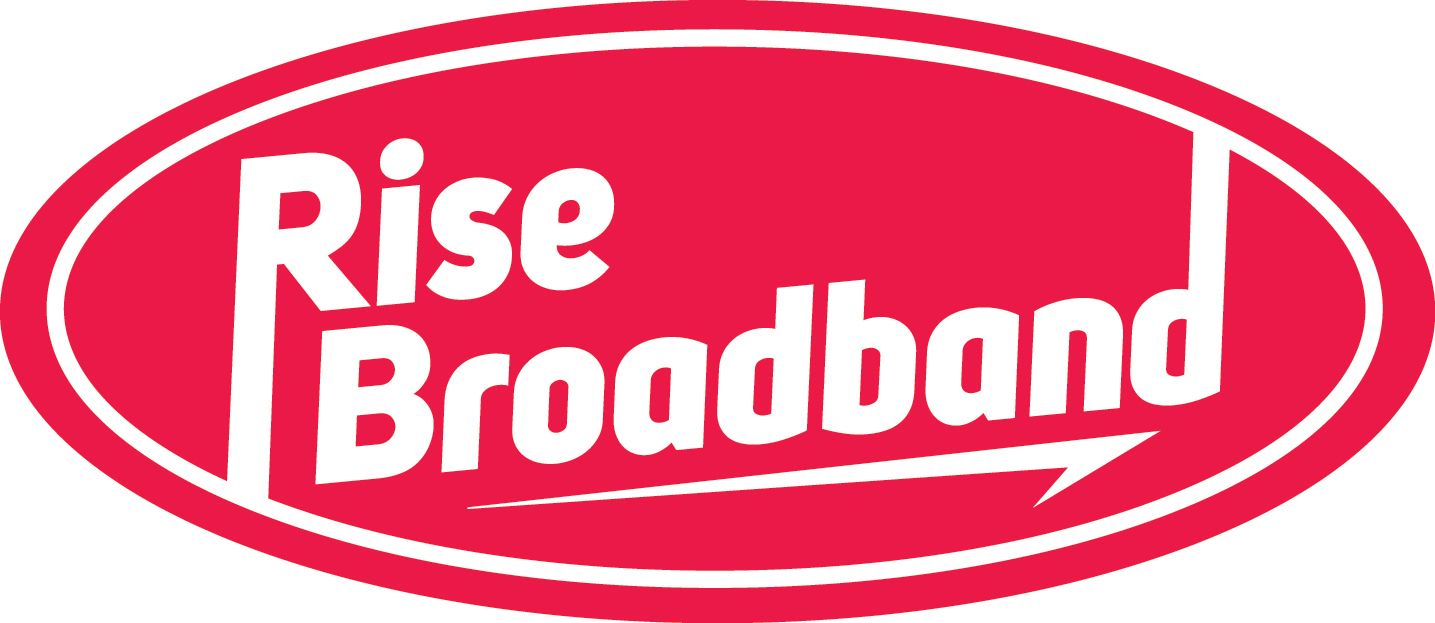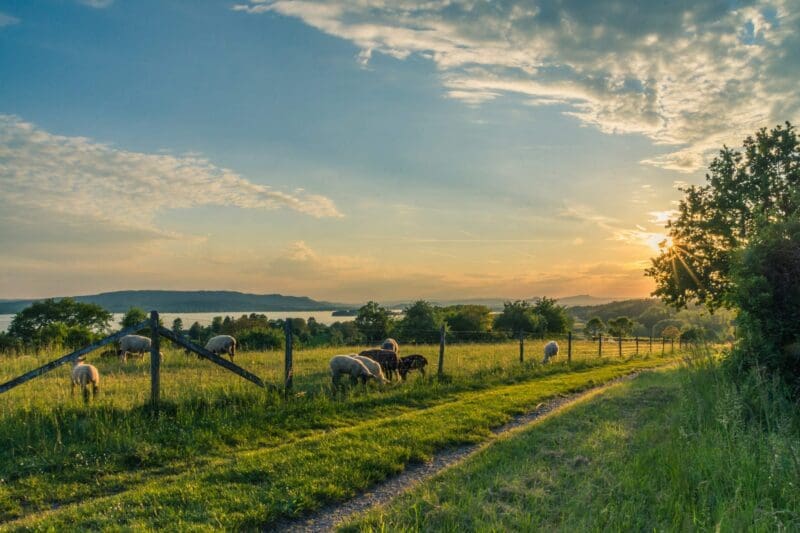Internet connectivity has become a critical lifeline. According to the Federal Communications Commission’s 2023 Broadband Deployment Report, approximately 24.7 million Americans still lack access to reliable high-speed internet, with rural areas bearing the brunt of this digital divide. Over 42 million Americans do not have access to adequate broadband internet.
The importance of internet access extends far beyond streaming and social media. For rural residents, a stable internet connection can mean:
- Access to emergency services during critical moments
- Opportunities for remote work and education
- Crucial communication during natural disasters
- Vital healthcare resources through telemedicine
Rural internet service remains a complex issue. Finding a provider that offers speeds beyond 10 Mbps download and 1 Mbps upload can feel like an impossible quest. This limitation isn’t just an inconvenience—it’s a significant barrier that impacts economic opportunities, personal safety, and quality of life for millions of Americans. This is especially the case for those living in rural America, as only 63% of rural Americans have broadband internet, compared to the nearly 99% of those living in urban areas.
This is an issue, as studies show that those living in rural areas without reliable internet access have a much more difficult time accessing healthcare and education. Those without internet are also at risk of suffering from the mental effects of isolation, as well as reduced literacy.
Reliable internet has become essential for those in remote locations, whether you’re:
- Relocating to a rural area
- Planning an extended road trip
- Preparing for a hunting expedition
- Seeking connectivity in less populated regions
As technology continues to advance, bridging the digital divide becomes increasingly crucial. The solution requires collaborative efforts from government agencies, telecommunications companies, and local communities to ensure that no American is left behind in our interconnected world.
Contents
- Key Takeaways
- What to Look for When Choosing an Internet Provider for Rural Areas
- Options for Internet in Rural Areas
- Best Rural DSL Internet: CenturyLink
- Best Fixed Wireless Rural Internet: Rise Broadband
- Best Satellite Internet: StarLink
- Best for RV Internet: Mobile Hotspots
- Best Overall Rural Internet Provider
- Cost Comparison of Rural Internet Options
- Rural Internet Government Programs & Subsidies
- Why Aren’t There More Rural Internet Options?
- Why You Shouldn’t Rely on Public Wi-Fi Networks
- Our Personal Experience With Rural Internet
- How to Improve Your Rural Internet Speed
- The Future of Rural Internet Technology
- Final Thoughts on Getting Internet Access in Rural Areas
- Frequently Asked Questions
Key Takeaways
- Rural internet access remains limited, affecting millions of Americans.
- DSL, satellite, fixed wireless, and mobile hotspots are the main rural internet options.
- StarLink provides the fastest satellite internet but requires a clear sky view.
- Fixed wireless is a strong alternative where tower coverage is available.
- Government programs can help lower internet costs for rural households.
- Upgrading routers and using Ethernet can improve rural internet speeds.
What to Look for When Choosing an Internet Provider for Rural Areas
Finding a reliable internet provider in a rural area can be challenging, but most locations have at least two or three options to choose from. While these may not be the same large providers that dominate urban markets, rural ISPs can offer competitive service depending on your needs. To find the best provider for your area, consider the following factors:
Coverage Area
Before anything else, check which providers service your specific location. Even if you were satisfied with an ISP in a city, it may not be an option in rural areas. Instead, you’ll need to research regional or national providers that specialize in rural internet service. Start by searching for available ISPs in your area and comparing their coverage maps.
Geographic and Weather Considerations
The physical environment where you live plays a major role in internet performance, particularly if you’re considering satellite service. Take note of your surroundings:
- Flat or Open Land: Typically better for fixed wireless and satellite connections.
- Forested or Mountainous Areas: Trees and hills can obstruct signals, impacting speed and reliability.
- Weather Conditions: Frequent storms or heavy cloud cover may affect satellite internet performance.
Understanding how the environment impacts connectivity can help you determine whether a satellite, fixed wireless, or wired internet option is best for your location.
Speed and Data Caps
Once you’ve identified available providers, compare their speeds and data limits. Many rural internet plans impose data caps, which can be restrictive for remote workers or families that rely on streaming, gaming, or frequent video calls. Look for providers that offer unlimited data or high data thresholds to avoid slowdowns or additional charges. Be sure to ask about actual speeds during peak usage times, as advertised speeds may not always reflect real-world performance.
These three features can help narrow the considerations for rural internet options. What’s available in Wyoming will be different from Utah or Alabama. So it’s important to start with research into what ISPs are feasible where you are located.
Options for Internet in Rural Areas
If you live in a rural area, there are three primary ways to get internet service: broadband service, satellite internet, and mobile hotspots. Each option has its advantages and drawbacks, and availability will depend on your specific location. Here’s what you need to know about each:
Broadband Service
Broadband is the most common type of internet used in urban and suburban areas, and it is available in some rural locations. However, coverage varies widely depending on the state and how remote your location is. Broadband internet includes:
- DSL: Uses existing telephone lines but can be slower in rural areas.
- Fiber: Offers the fastest speeds but has limited rural availability.
- Wireless Internet: Fixed wireless providers use towers to deliver internet service, often with better reliability than satellite.
Satellite Internet
Satellite internet relies on a dish to send and receive signals from communication satellites. While it was once the slowest option, speeds have improved significantly with newer low-orbit satellites. However, performance can be affected by:
- Obstructions: Trees, hills, or buildings can interfere with signals.
- Weather Conditions: Heavy rain or cloud cover may disrupt connectivity.
Mobile Hotspots
A mobile hotspot connects to a nearby cell tower and shares that connection with other devices. This is a popular choice for RV travelers, van lifers, and part-time rural residents. As 5G networks expand into rural areas, hotspots could become a competitive alternative to traditional home internet, but coverage is still limited in some regions.
With those definitions intact, we can review a few of the top options in each category.
Best Rural DSL Internet: CenturyLink
If you happen to be close enough to a rural town that offers DSL internet, CenturyLink is likely to be one of your options. They are a large, established business that, thankfully, is providing internet access in rural areas where people need it.
DSL internet, or a Digital Subscriber Line, refers to a high-speed internet connection that works through your existing telephone line. Existing phone lines are able to send internet data across unused frequencies that phones can’t access. So if you need to make a phone call while using your DSL internet connection, you won’t notice a dip in service quality across your internet connection or phone call. This also tends to be a cheaper internet option as there aren’t infrastructure costs associated with it like fiber or cable internet access.
We recommend CenturyLink for several options over other rural internet providers:
- They offer unlimited data plans, perfect for families or remote workers.
- There are no-contract options, allowing you to discontinue service depending on your needs.
- With speeds up to 100 megabytes, CenturyLink has some of the fastest internet speeds across DSL providers.
They currently operate in 36 states, particularly across the Midwest and Western areas of the country.
Best Fixed Wireless Rural Internet: Rise Broadband
Let’s say that you don’t have any phone lines in your area or home to tap into to access DSL internet options. Your next best bet for getting internet in rural areas could be what’s called “fixed wireless providers”. This refers to internet broadcast from towers through airwaves to receivers that the service provider will have installed on the user’s property. For fixed wireless internet connections to work, the receiver needs to be around 10 miles from the service provider’s tower.

While that sounds complicated, it essentially works similarly to cell phone towers and service, except just for internet access. As long as you are within a tower’s 10-mile proximity, you should get solid internet access through a fixed wireless provider.
Our top pick in this category for rural areas is Rise Broadband. While satellite internet providers can be limited to areas without dense tree coverage, that isn’t a concern for fixed wireless providers. Rise Broadband could be the perfect choice for areas that also can’t tap into DSL, cable, or fiber networks as well.
A few other great features that Rise Broadband offers include:
- Unlimited data plans
- No data caps so you can stream and game to your content
- Speeds upwards of 50 megabytes down with an upper limit of 100 megabytes
- Coverage spans 16 states: Colorado, Idaho, Iowa, Illinois, Nebraska, Texas, and Utah have the highest serviceability
- Costs are lower than satellite internet for comparable service
Fixed wireless internet service isn’t the right choice for every rural area. However, it has a lot of good points and for the price can deliver strong value.

Best Satellite Internet: StarLink
We can’t talk about satellite internet connection without talking about the major industry disruptor that is StarLink. If you lived in a rural area in the early 2000s, satellite internet was the only internet provider around and it was, simply put, terrible. Small clouds would render the service useless, while a full storm would leave you without access for hours.

Luckily, satellite internet has come a long way since then, with StarLink bringing it back again as a viable option. While most satellite internet providers can’t guarantee lightning-fast speeds, StarLink can provide over 50-megabyte download speeds, easily. I personally use StarLink to stay connected to the internet in a very rural area and can vouch for being able to have video conference calls, movie streaming nights, and download video games. Most of the time, my download speeds are over 100 megabytes down, which is fantastic compared to many other satellite internet options.
StarLink isn’t a total panacea for satellite internet users. Upload speeds are pretty dismal. If you are a video editor who needs to upload projects, rural internet options across the board will be a disappointment, including StarLink. We also don’t recommend it for RV users because its performance really diminishes when the satellite is blocked (even a little bit) by trees. If you’re in an RV park with even a couple of trees, you may find your internet connection drops sporadically.
Despite these cons, we still recommend it as the strongest contender in the satellite internet category, particularly in rural areas without significant overhead tree coverage.
Best for RV Internet: Mobile Hotspots
If you travel frequently in a travel trailer or van or find yourself on the road a lot for work, a mobile hotspot could be the most affordable option while still providing a high chance of solid internet speeds.
AT&T, Verizon, and T-Mobile all offer mobile hotspot plan options that can be added to your mobile phone plans. Most offer unlimited data plans as well, which is a boon for remote workers escaping cities. All three major carriers have extensive networks of cell towers across the U.S., including rural areas. However, depending on where you spend most of your time, you may want to compare their coverage maps to ensure that you are getting the best connectivity available.
So how does a mobile hotspot work? First, you need a hotspot device. Some carriers offer these directly, while for others, you’ll need to buy the hardware and then activate your internet connection plan for the device separately. Once you have your hotspot device, you can contact your cell phone company and add an internet plan to your device. And that’s it! Once your hotspot is receiving an internet connection, all it will need is cell reception to activate coverage for any and all connected devices.
Because getting cell coverage is a major component of using a hotspot, you’ll want to double-check that you do get a cell signal where you are planning on using it. Your mountain cabin might have beautiful views, but it could have terrible reception, rendering a mobile hotspot useless.
Best Overall Rural Internet Provider
With so many internet providers competing for rural coverage, choosing the best overall option depends on speed, reliability, and affordability. While some providers excel in one area, few can deliver consistent performance across all metrics. Based on our research and firsthand experience, StarLink and Rise Broadband stand out as the best options for most rural users.
Why StarLink is the Best Satellite Internet for Rural Areas
StarLink has redefined rural satellite internet, offering speeds that rival traditional broadband. Unlike older satellite providers, StarLink uses low-earth orbit satellites, reducing latency and making online activities like video calls and streaming much smoother. It’s ideal for areas where DSL and fixed wireless are unavailable.
However, StarLink isn’t perfect. The high upfront cost for equipment ($599) and occasional slowdowns during congestion hours may frustrate some users. If you live in a heavily wooded area or rely on consistent upload speeds, you may need to explore alternatives.
Why Rise Broadband is the Best Fixed Wireless Internet for Rural Areas
For users within 10 miles of a fixed wireless tower, Rise Broadband is a solid choice. Unlike satellite, fixed wireless internet isn’t affected by weather conditions and provides a more stable connection. Rise Broadband also offers affordable unlimited data plans, making it a better option for heavy internet users who work remotely or stream frequently.
If you’re deciding between StarLink and Rise Broadband, ask yourself:
- Do I have access to a fixed wireless provider? If so, Rise Broadband is usually the better choice.
- Do I live in an area where fixed wireless isn’t available? If so, StarLink is your best bet for high-speed rural internet.
Cost Comparison of Rural Internet Options
Internet service costs vary widely in rural areas depending on technology, speed, and availability. Here’s a breakdown of typical pricing for different rural internet options:
| Internet Type | Monthly Cost | Installation Fees | Average Speeds | Best For |
|---|---|---|---|---|
| DSL Internet | $50 – $80 | Varies (often free) | 10 – 100 Mbps | Small towns with phone lines |
| Satellite Internet | $90 – $150 | $599+ for StarLink | 50 – 250 Mbps | Remote areas without other options |
| Fixed Wireless | $60 – $120 | Varies by provider | 25 – 100 Mbps | Areas with good tower access |
| Mobile Hotspots | $50 – $100+ | Device cost ($200+) | 5 – 100 Mbps | Travel, RVs, or backup internet |
Which Option Provides the Best Value?
If cost is a primary factor, fixed wireless internet (like Rise Broadband) usually delivers the best balance of affordability and performance. However, if you live in an area without a fixed wireless provider, StarLink’s upfront cost may be worth it for long-term reliability.
Rural Internet Government Programs & Subsidies
Many rural households qualify for government assistance programs that help offset the high cost of internet access. These programs aim to close the rural digital divide and improve connectivity in underserved areas.
Federal Assistance Programs
- Affordable Connectivity Program (ACP): Qualifying households receive up to $30/month off internet service ($75/month for Tribal lands).
- USDA ReConnect Program: Funds broadband expansion projects in rural areas. Check with local ISPs to see if new broadband options are coming to your area.
State-Level Rural Internet Initiatives
Some states have their own programs, including:
- Colorado Broadband Fund (aims to bring broadband to 99% of residents by 2027).
- California Rural Broadband Initiative (investing in fiber and wireless networks).
If you need affordable rural broadband options, check with your state’s public service commission to see if you qualify for subsidies.
Why Aren’t There More Rural Internet Options?
Several state and national initiatives seek to increase the number of internet options for rural citizens, particularly as rural areas get a population boom after absconding from highly populated cities during the pandemic. For example, Colorado has a state-wide initiative to bring broadband internet access to 99% of the state by 2027, with the 1% being people who opt-out of receiving it.
Perhaps the biggest improvement in options for rural internet users is StarLink’s satellite internet. While the waitlists can be very long and you still have to contend with blockers such as trees and buildings, download speeds can be 10x faster than broadband options in the same area.
Why You Shouldn’t Rely on Public Wi-Fi Networks
When none of the rural internet service options seem like good options, it can feel like the path of least resistance to simply only use the internet when you’re in town and can go to the library or coffee shop and use their free Wi-Fi. However, this introduces a major amount of digital security risk for you as the user.
Public internet connection networks can make users sitting ducks for computer viruses, malware, identity theft, and more. Unless you are using a VPN to protect your identity, data, and devices while connecting to public Wi-Fi networks, you could be putting yourself at risk. That’s why we recommend setting up some kind of personal network, whether through a broadband connection, satellite internet, or a mobile hotspot. These internet connections are private and will provide more digital security for you and your family.
Our Personal Experience With Rural Internet
Over the past few years, we’ve tested nearly every rural internet provider available, from satellite to mobile hotspots. Here’s what we’ve learned from first-hand experience:
StarLink Works Best—When You Have a Clear View of the Sky
When using StarLink in a remote cabin, we saw speeds consistently over 100 Mbps—as long as there were no trees obstructing the dish. However, when surrounded by tall pines, speeds dropped dramatically.
Recommendation: If you choose StarLink, ensure you have a completely open sky or consider installing a tall mounting pole for the dish.
Fixed Wireless is a Great Middle Ground
We also tested Rise Broadband, which delivered 50 Mbps speeds without the weather disruptions of satellite internet. However, service was only available within 10 miles of a tower, so coverage is limited.
Recommendation: If you live in an area with a fixed wireless provider, this is often a better choice than satellite due to lower latency and better consistency.
Mobile Hotspots Are Only Reliable in Good Signal Areas
For road trips, a T-Mobile or Verizon hotspot worked well in areas with strong LTE or 5G signals. However, in remote mountains, connectivity was unreliable at best.
Recommendation: Check your cell signal before relying on a mobile hotspot. If you have poor service, invest in a cell signal booster.
How to Improve Your Rural Internet Speed
Even with a decent rural internet provider, slow speeds and unreliable connections can still be an issue. If you’re dealing with buffering, dropped calls, or sluggish downloads, here are some actionable ways to boost your rural internet performance:
1. Upgrade Your Router
Many people rely on outdated routers, which can limit your internet speed even if you have a fast connection. If your router is more than three years old, consider upgrading to a modern mesh WiFi system to improve coverage and reliability.
2. Use an Ethernet Connection
If you rely on WiFi for everything, switching to a wired Ethernet connection can provide a noticeable speed boost. This is especially useful for working from home, gaming, or streaming in high definition.
3. Optimize Your Satellite Dish or Fixed Wireless Receiver
- For StarLink users: Ensure your dish has a clear view of the sky, free from trees or obstructions.
- For fixed wireless users: Ask your provider about adjusting or upgrading your antenna to improve signal strength.
4. Consider a Signal Booster for Mobile Hotspots
If you rely on a mobile hotspot, a cell signal booster can significantly improve connectivity, especially in low-signal areas. Look for brands like weBoost that specialize in rural signal enhancement.
The Future of Rural Internet Technology
Rural internet options are rapidly evolving, with new technologies aiming to deliver faster, more reliable service. Here’s what’s coming next:
1. Expansion of 5G Home Internet
As more 5G towers are built in rural areas, 5G home internet could become a strong alternative to DSL and satellite. Providers like T-Mobile Home Internet are already expanding into remote locations.
2. Next-Generation Low-Orbit Satellites
StarLink’s next-gen satellites promise faster speeds and lower latency, making rural satellite internet more competitive with wired broadband.
3. Government-Funded Broadband Expansion
Both federal and state governments continue to invest in rural broadband infrastructure, meaning fiber and fixed wireless access will increase over the next decade.
For rural residents, the best internet options are improving, but for now, StarLink and fixed wireless remain the top choices for getting internet access.
Final Thoughts on Getting Internet Access in Rural Areas
Reliable internet access is no longer a luxury—it’s a necessity. For rural residents, finding a provider that delivers fast speeds, stable connections, and affordable pricing can be challenging. While DSL and mobile hotspots work for some, fixed wireless and satellite internet remain the best choices for most rural users.
After testing various providers, we found that StarLink offers the best satellite internet experience, provided there’s a clear view of the sky. Rise Broadband excels in fixed wireless, delivering stable speeds without weather disruptions. If you’re looking for the best rural internet solution, these options stand out for speed, reliability, and value.
If you need fast and dependable rural internet, consider StarLink for remote locations or Rise Broadband if fixed wireless is available in your area. Don’t let slow internet hold you back—find the best rural internet provider for your needs today.
Frequently Asked Questions
What Is the Most Reliable Internet for Rural Areas?
Fixed wireless is the most reliable if you have tower access. StarLink is the best alternative for remote locations without other options.
Does Weather Affect Rural Internet Performance?
Yes, satellite internet can be disrupted by storms and heavy clouds. Fixed wireless and mobile hotspots are generally less affected by weather conditions.
Is StarLink Worth the Cost for Rural Internet?
If you live in a remote area without broadband or fixed wireless, StarLink is a great investment. It provides high speeds but requires a clear sky view.
Can You Get Unlimited Data in Rural Areas?
Some fixed wireless and DSL providers offer unlimited data. StarLink has no official data caps but may slow speeds during peak congestion times.
How Can I Boost My Internet Speed in a Rural Area?
Upgrading your router, using Ethernet, optimizing your satellite dish placement, and investing in a signal booster for mobile hotspots can improve speeds.
Are Mobile Hotspots a Good Internet Option for Rural Areas?
They work well in areas with strong cell service but can be unreliable in remote locations. A signal booster can help improve performance.





